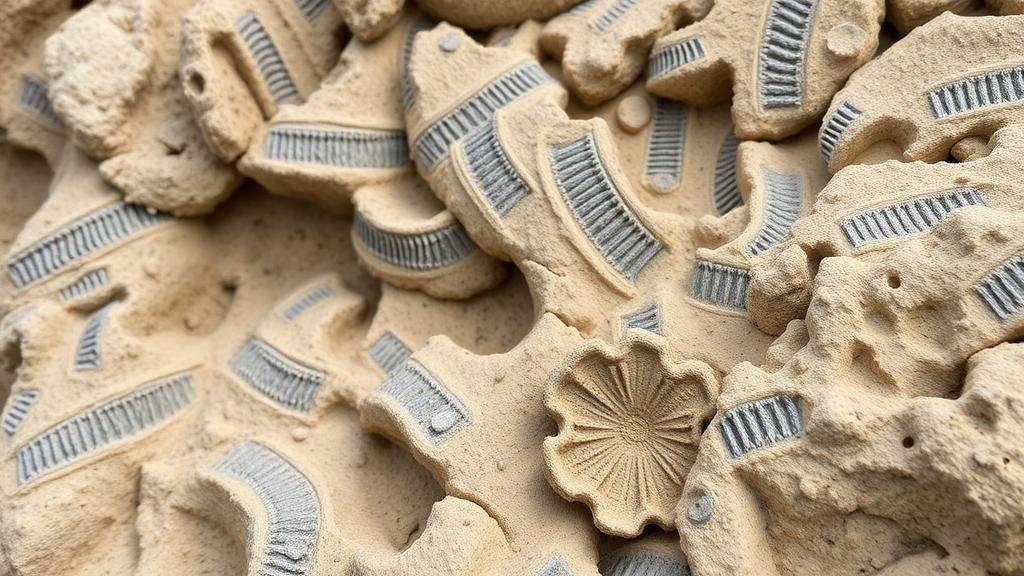Excavating marine fossils in the cliffs of Italy’s Amalfi Coast, remnants of prehistoric seas.
Excavating Marine Fossils in the Cliffs of Italy’s Amalfi Coast
The Amalfi Coast, characterized by its picturesque views and enchanting landscape, holds more than just stunning scenery: it guards remnants of prehistoric seas within its cliffs. For rockhounds and mineral collectors, the opportunity to excavate marine fossils in this UNESCO World Heritage site is both exhilarating and educational. This article explores the significance of these fossils, the techniques for successful excavations, and tips for responsible collecting.
The Geological Context of the Amalfi Coast
The cliffs of the Amalfi Coast are primarily composed of limestone, a sedimentary rock formed from mineral calcite, usually precipitated from seawater. regions unique geology was shaped by the interactions of tectonic plates millions of years ago, resulting in a dynamic landscape where ancient marine sediments were thrust upwards, forming cliffs that now stand nearly 1,500 feet high.
Fossils found in this area date back to the Cretaceous Period (about 145 to 66 million years ago), marking a time when the region was submerged under a vast sea teeming with life. Collectors can expect to find an array of fossils, including:
- Ammonites – spiral-shelled cephalopods
- Fossilized corals – indications of biodiversity
- Sea urchins and other echinoderms – key indicators of marine environments
Excavation Techniques
Excavating fossils ethically and safely is essential. As a rockhound, you should be prepared with the right tools and techniques:
- Tools: Equip yourself with a geological hammer, chisel, safety goggles, gloves, and a sturdy collection bag. A small brush and a magnifying lens can also aid in cleaning and inspecting the fossils.
- Location: Focus on exposed cliff faces or sediment layers where weathering has occurred. Pay attention to the strata; fossil-rich layers are often more accessible.
- Tides and Weather: Be aware of local weather conditions and tides. Ideal excavation times are during low tide and clear weather, which minimizes risks and enhances visibility.
Identifying and Collecting Fossils
Knowledge of how to identify marine fossils is crucial for any collector. Here are some tips:
- Examine Features: Look for distinctive markings, shell structures, or impressions. For example, ammonite fossils have a characteristic coiled shape, while bivalves might look like modern clams.
- Use Reference Guides: Carry a fossil identification guide specific to the region. Books and field guides can provide crucial information about the types of fossils that can be found in the area.
Legal and Ethical Considerations
While the thrill of hunting for fossils can be tempting, it’s important to adhere to local laws and ethical guidelines. Here are some considerations:
- Permits: Check if permission is required for fossil collecting. Certain areas may be protected to preserve geological and paleontological integrity.
- Leave No Trace: Always minimize your impact on the environment; fill any holes dug and avoid disturbing wildlife.
Practical Tips for Rockhounds
To maximize your fossil-collecting experience on the Amalfi Coast, consider the following practical tips:
- Join Local Clubs: Engaging with local fossil clubs or geological societies can provide valuable insights and camaraderie.
- Document Your Finds: Keep a log of locations found, types of fossils identified, and photographs. This documentation helps in building a personal collection and contributes to scientific knowledge.
Conclusion
The Amalfi Coast is not merely a feast for the eyes but also a treasure trove for fossil enthusiasts. By understanding the geological context, utilizing appropriate excavation techniques, and maintaining ethical standards, collectors can uncover the ancient remnants of marine life that once thrived in the region’s prehistoric seas. Not only does this hobby enrich personal collections, but it also fosters a deeper appreciation for our planet’s geological history.
Whether you are a seasoned rockhound or a curious beginner, the cliffs of Italy’s Amalfi Coast offer a window into the distant past–a journey worth taking.


